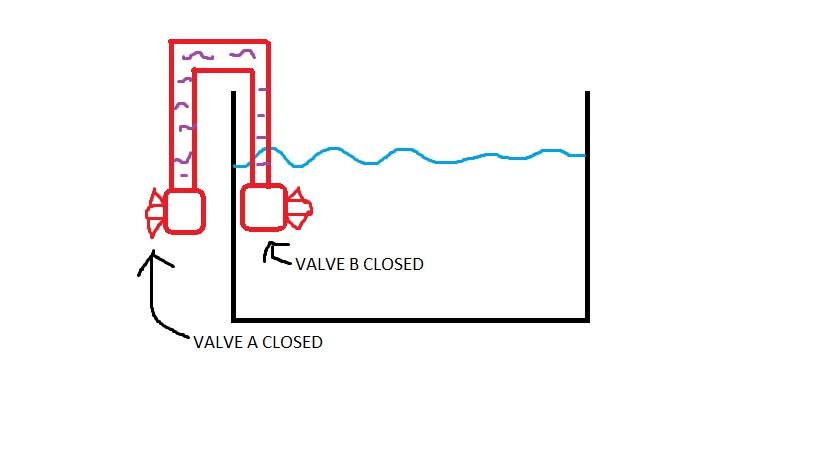 If I have a tube filled with water, whose one end I dip into a container filled with water. If I release the other end will it start a siphon ?
If I have a tube filled with water, whose one end I dip into a container filled with water. If I release the other end will it start a siphon ?
-
1$\begingroup$ Not necessarily. $\endgroup$– user93237Commented Jul 19, 2017 at 19:21
-
$\begingroup$ then what conditions do I need to start one with a tube filled with water, whose both sides are sealed to restrain the water inside it ? $\endgroup$– Udit SarkarCommented Jul 19, 2017 at 19:29
-
$\begingroup$ If you fill up an inverted U-shaped pipe tube with water, then gravity will try to pull the water down and out of one end or the other. Which end depends on how things are set up. If the water flows out of one end, then that means the tube acts as a siphon. If the water flows out of the other end, then the water just flows back into the water container. If you want a more detailed answer, you should provide a diagram with your question. $\endgroup$– user93237Commented Jul 19, 2017 at 19:41
-
$\begingroup$ Okay, if valve A,B are opened will it create a siphon ? Also if so then in which order they should be opened ? $\endgroup$– Udit SarkarCommented Jul 19, 2017 at 20:26
2 Answers
Yes. Valve B doesn't need to be closed (it doesn't need to exist). Open A, and water will flow out. I have tested this experimentally.
-
$\begingroup$ I may want to pull the inverted U out of the water with the valves closed, I would need the valve B for that. In that case in which order should I open the valves ? First A then B ? $\endgroup$ Commented Jul 20, 2017 at 4:13
When both valves A and B are open, then it will start to siphon if both openings are below the level of the surface of the water in the container. It does not matter how deep opening B is. It does matter how far below the surface opening A is. The further down you go the faster the flow will be.
Essentially what is happening is that you have extended the container to point A via a convoluted upside-down U-shaped path. If you put a hole in the side of the container at the same height at point A, water would leak out. The same thing happens at point A but there is some flow resistance because of the tube.
Now, there are some caveats: (1) If valve B is closed, you might get a few drops from internal pressures adjusting but it will not siphon. (2) The fact that the tube rises above the surface of the water doesn't prevent siphoning because the water rising in one side of the upside-down U is balanced by the water descending in the other side. However, there is a limit to how high it can go and this is based on the air pressure experienced at the surface of the water. A taller U will have a slower flow and at some point (about 33 feet at sea level) all flow will stop.
-
$\begingroup$ Sir, if I keep the valve closed and pull the inverted U out of water and place it back again after a while, will I still have the siphon ? $\endgroup$ Commented Jul 20, 2017 at 4:11
-
$\begingroup$ So long as the inverted U is filled with water when both valves are opened, you will still have a siphon. $\endgroup$– phrCommented Feb 3, 2018 at 23:55
